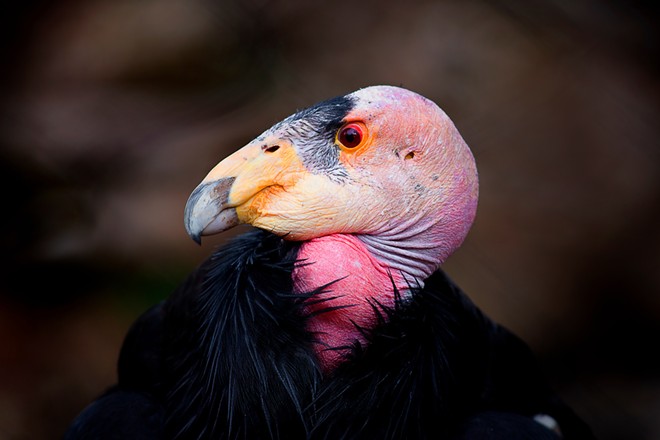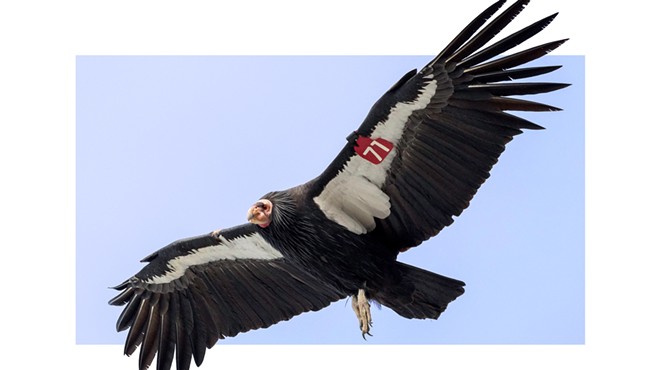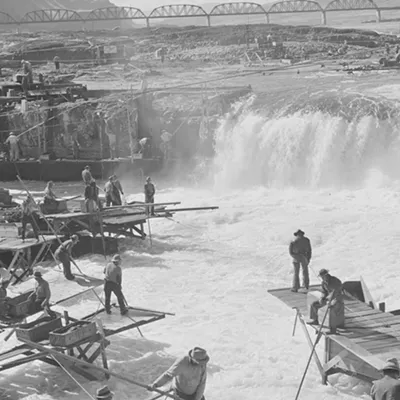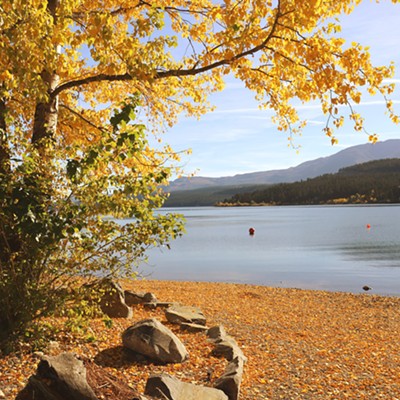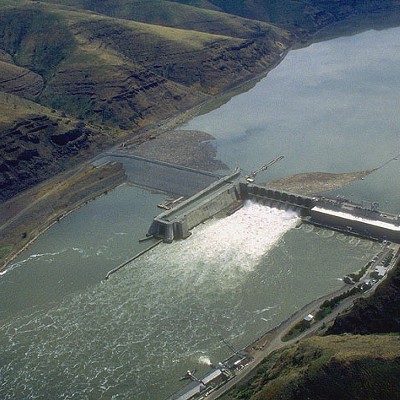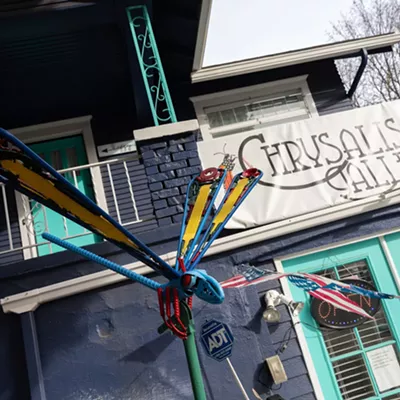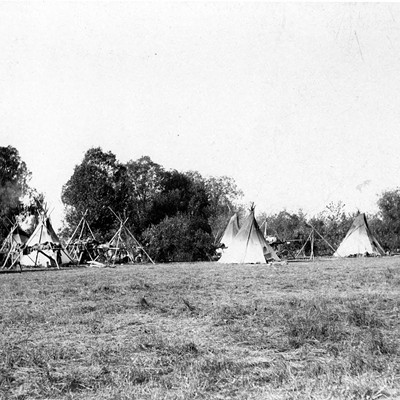CONDORS RIGHT NOW
The most recent annual reports on condor status from the U.S. Fish and Wildlife Service tell a measured but generally positive story. After several tenuous years in the bowels of the San Diego Zoo and then in dank cages at the World Center for Birds of Prey outside Boise, the world population of living California Condors now exceeds 500. Almost 200 of those birds remain behind bars, but the remainder are flying free. Each year, 15 or so new wild chicks fledge out, and close to two dozen rehabilitated captives are given another chance at freedom.
While the captive population has remained more or less stable for the past decade, the wild population has slowly increased. Currently, over 200 wild condors inhabit three areas in California, with a hundred more scattered between southern Utah and northern Arizona. Under the auspices of Mexico City's Chapultepec Zoo, the numbers in Baja California are heading toward 50. Four newcomers released on the lower Klamath River last spring represent the first tenuous steps toward a Pacific Northwest population that in time, hopefully, would center on the lower Columbia.
The Fish and Wildlife mortality count is not so uplifting. Stories of cartoonish condor behavior regularly appear in the media, proving that it's hard to learn how to act when most of the teachers have already disappeared. Many captive release birds die trying to figure things out.
As an endangered species, all deceased condors are by law returned to the agency and necropsied to determine the cause of death. A pie chart of condor mortality over any given year shows numbers of birds clipping power lines, falling victim to predators on the ground, lit up in wildfires, falling ill, drowning and getting shot. Mishaps are bound to happen, but the fact remains that half of condor mortality in the wild is due to lead poisoning. Those birds that track down deer wounded by gunfire ingest lead shot even as they feast on warm entrails, just as they have since the days of Lewis and Clark and David Douglas. We remain the agent of their poisoning and the main obstacle to a sustainable population.
THE FUTURE OF CONDORS
With wild condors conditionally established in wild areas of the Southwest, Southern California and Baja California, the Condor Restoration Project has taken aim at the Pacific Northwest. The most recent release, in partnership with the Yurok Tribe of Northern California, took place last year around the mouth of the Klamath River, a salmon stream of historic importance.
The next release will target the mouth of the Columbia River, in the age-old condor territory documented by so many written accounts. The Oregon Zoo has been raising birds without any direct human contact. Downriver tribes such as the Cowlitz look forward to the return of a bird tribe that long played a lead role in their language and culture.
The Columbia and Snake Rivers represent a huge expanse of salmon habitat that drain long sections of the Rocky Mountains. As soon as condors establish themselves on the lower river, the Columbia's regular afternoon breezes will carry some adventurous bird upstream, to Wishram Village. Family lore can begin to take shape again from Mount Adams and Mount Jefferson to Hells Canyon, the Grand Coulee country and far beyond.
The timing of these next releases remains undetermined, but if salmon recovery programs led by tribes like the Spokanes find success, there's a chance that within a few generations, condors might be following fish upriver, touching down to gorge on spawned-out carcasses beside humans who have finally understood that people represent only one element in an unimaginably dynamic world.

